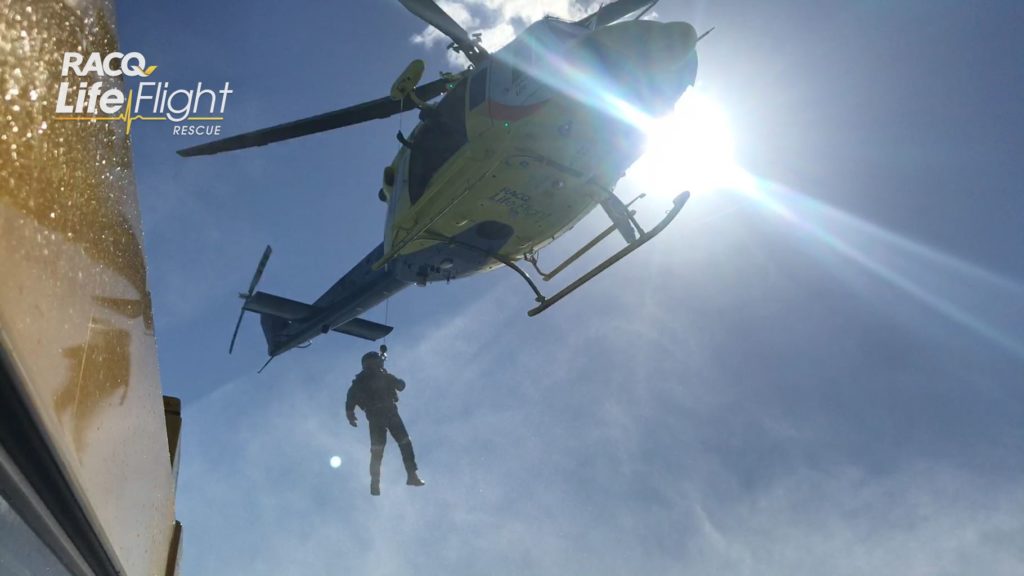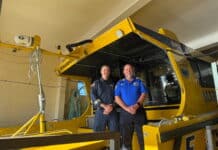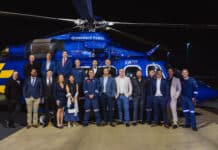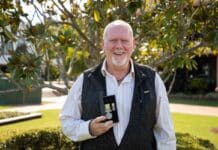
The Bundaberg-based RACQ LifeFlight Rescue crew has performed several mock rescues as part of ongoing rigorous training which ensures they’re ready for any emergency.
RACQ LifeFlight Rescue Pilot Tony Miller said the exercise was invaluable to rescuers.
“Maritime work is some of the most difficult stuff we do, so it’s very important to keep our skills up-to-date,” Mr Miller said.
Flying off the coast from Bundaberg, the crew worked alongside the Bundaberg-based Volunteer Marine Rescue to hone their search, rescue and water winching skills.
The training included vessel transfers, raft drop-offs and winching out of the water, to reflect what an actual ocean rescue could potentially involve.
“For example, if a vessel has sunk, the survivors could already be in the water, so we need to be ready to perform that task.”
The three exercises are essential for the Bundaberg-based crew to practise, given the high number of sea-based missions they’re tasked with.
A notable mission for the team, late last year, saw a man winched to safety after his kayak capsized off the coast of Fraser Island.
He was in the water for approximately two hours and had drifted around one kilometre from the shore, when the Bundaberg RACQ LifeFlight Rescue helicopter hoisted him from the ocean.
This style of training happens every six months, so RACQ LifeFlight Rescue can respond to all situations, while maintaining its commitment to the Australian Maritime Safety Authority.
Construction of a new aeromedical base is set to get underway in coming weeks which will be the new home for LifeFlight and the Royal Flying Doctor Service.
- Other news: LifeFlight Bundaberg flew 304 missions last year







